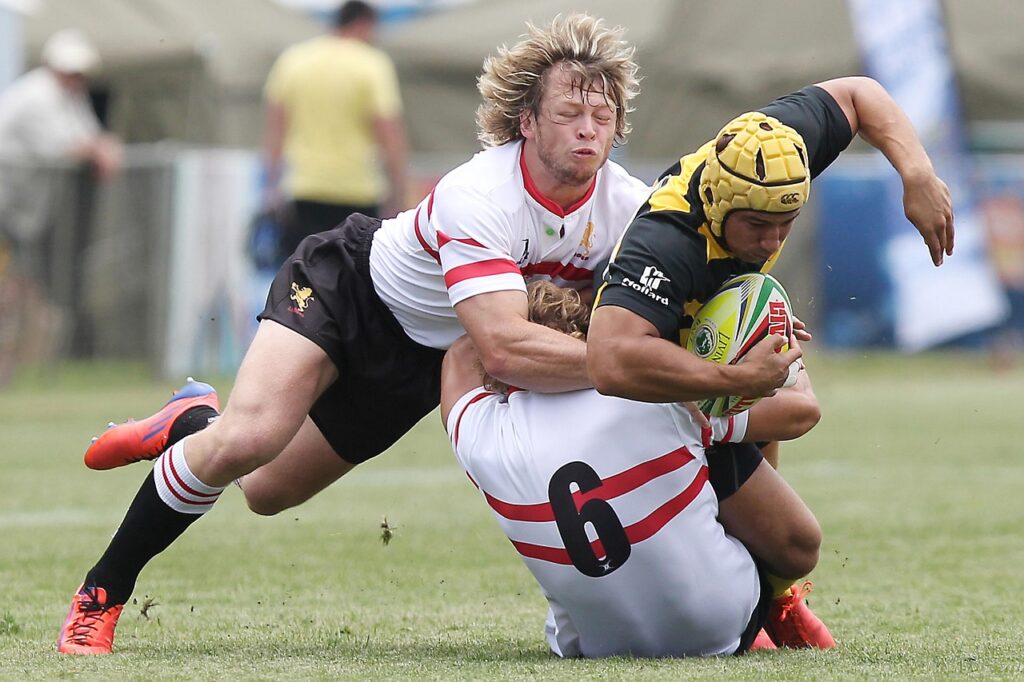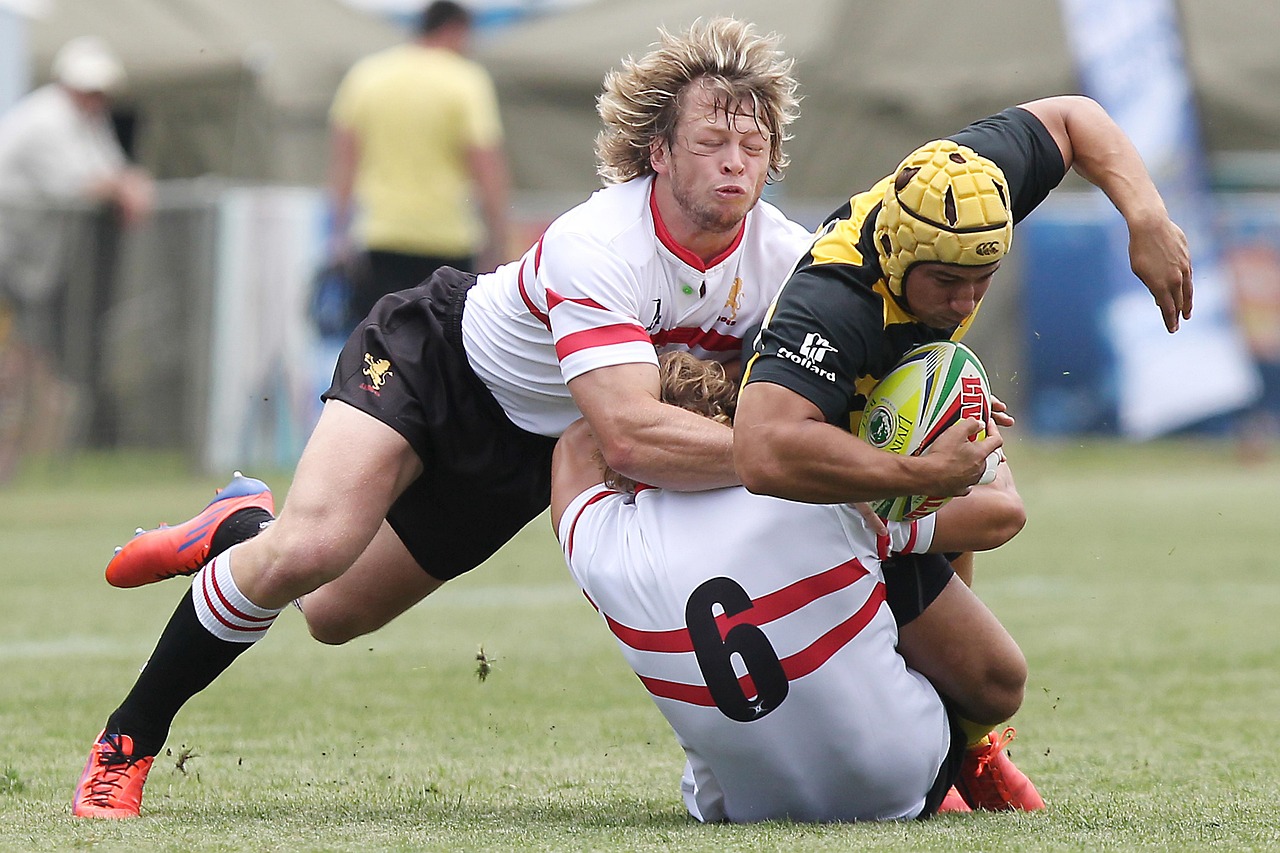Rugby is a thrilling, high-impact sport where player safety is paramount. With up to 25% of rugby injuries being concussions, choosing the best rugby headgear for your position can make a significant difference in protecting your head and boosting confidence on the field.
But not all headgear is created equal—different positions, like forwards and backs, have unique needs. This guide will help you navigate the process of selecting the best rugby headgear for your position, covering fit, safety standards, materials, and top brands like Canterbury and Gilbert.
Whether you’re a prop enduring scrums or a winger sprinting down the field, we’ve got you covered with actionable advice to keep you safe and performing at your best.
Why Rugby Headgear Matters

Rugby headgear, often called a scrum cap, is designed to protect against cuts, abrasions, and cauliflower ear, particularly in high-contact situations like scrums and rucks.
While research shows that traditional headgear doesn’t significantly reduce concussion risk, newer designs, like the N-Pro, claim to reduce impact forces by up to 75% compared to other models.
Selecting headgear tailored to your position ensures optimal protection and comfort, allowing you to focus on the game without distraction.
The Best Rugby Headgear for Your Position
Each rugby position faces unique challenges, requiring specific headgear features. Here’s a breakdown of what to consider based on your role:
1. Forwards
Forwards in this context involve props, hookers, locks, flankers, and number 8. They endure intense physicality in scrums, mauls, and rucks, making headgear essential for protection against repetitive impacts.
Key Needs
- Thicker Padding: Forwards need robust padding, especially around the forehead and temples, where impacts are frequent. The parietal-temporal region is a common concussion site, accounting for 86% of cases.
- Secure Fit: A snug fit prevents slippage during scrums. Look for adjustable straps or laces, like those on the Canterbury Ventilator.
- Durability: Headgear must withstand repeated impacts. Studies show some headgear loses up to 50% of its impact attenuation after multiple hits, so choose models like the N-Pro for sustained performance.
Top Pick: Canterbury Ventilator
Reduces impact force by up to 47%, ideal for forwards due to its thick foam and ventilation for comfort.
2. Backs
Backs in this context Scrum-halves, Fly-halves, Centres, Wingers, and fullbacks, rely on speed and agility, facing fewer but often high-velocity impacts during tackles or collisions.
Key Needs
- Lightweight Design: Lightweight headgear, like the Gilbert Air, prevents drag during sprints while still offering protection.
- Ventilation: Backs need breathable designs to stay cool during high-intensity runs. Look for models with ventilation holes or airflow tubes.
- Peripheral Vision: Ensure headgear doesn’t obstruct vision, critical for scanning the field and making quick decisions.
Top Pick: Gilbert Air Headgear
Lightweight with excellent ventilation and adjustable fit, perfect for backs who prioritize speed and vision.
Key Factors to Consider When Choosing Rugby Headgear
To find the best rugby headgear for your position, evaluate these critical factors:
1. Fit and Comfort
A well-fitted headgear stays secure during play and doesn’t distract you. Measure your head circumference at eyebrow level and refer to brand size charts (e.g., N-Pro’s sizing guide). Look for:
- Adjustable chin straps and rear laces for a snug fit.
- Soft, breathable fabrics to reduce irritation.
- Designs that avoid obstructing ears for clear communication.
2. Safety Standards
All rugby headgear must meet World Rugby’s Regulation 12, limiting padding to 10mm thickness and ensuring safety without compromising the game’s nature. Check for:
- World Rugby approval mark for compliance.
- CE or UKCA certifications, as seen in advanced models like N-Pro.
- Emerging technologies like Enkayse foam, which reduces impact forces by up to 85% in lab tests.
3. Material and Design
Materials impact both protection and comfort. Common options include:
- Honeycomb Foam: Durable and strong, ideal for forwards but can overheat.
- Ventilated Foam: Offers breathability for backs, with holes to improve airflow.
- Viscoelastic Foam (e.g., N-Pro’s Defentex): Advanced impact absorption, reducing linear and rotational forces.
4. Impact Attenuation
While traditional headgear primarily prevents superficial injuries, newer models show promise in reducing impact forces:
- Canterbury Ventilator: Reduces peak acceleration by 47%.
- N-Pro: Reduces linear and rotational accelerations by up to 75% and 60%, respectively.
- Hedkayse: Claims up to 85% force reduction, pending World Rugby approval.
5. Position-Specific Features
- Forwards: Prioritize thicker padding and secure straps.
- Backs: Opt for lightweight, ventilated designs with minimal vision obstruction.
- Youth Players: Choose adjustable, comfortable models to encourage consistent use, as youth are more likely to believe headgear prevents injuries.
Top Rugby Headgear Brands and Models
Here’s a comparison of leading headgear options, tailored to different positions:
| Brand/Model | Best For | Key Features | Impact Reduction | Price Range |
|---|---|---|---|---|
| Canterbury Ventilator | Forwards | Thick foam, ventilation, secure fit | Up to 47% | $40–$60 |
| Gilbert Air Headgear | Backs | Lightweight, adjustable, ventilated | Moderate | $30–$50 |
| N-Pro | All Positions | Viscoelastic foam, CE/UKCA certified | Up to 75% | $60–$80 |
| Body Armour Club | Forwards | Affordable, durable, good protection | Moderate | $25–$40 |
| Hedkayse | All Positions | Enkayse foam, high impact reduction (pending approval) | Up to 85% | $70–$100 |
Common Misconceptions About Rugby Headgear
- “Headgear Prevents Concussions”: While traditional headgear reduces cuts and abrasions, it doesn’t significantly lower concussion risk. Newer models like N-Pro and Hedkayse show promise but require further field testing.
- “Headgear Encourages Risky Play”: Studies show tackle style and frequency don’t change with headgear use.
- “All Headgear Is the Same”: Different brands and models vary widely in impact attenuation, fit, and suitability for specific positions.
Tips for Maintaining Your Rugby Headgear
- Clean Regularly: Wash with mild soap and water to prevent odor and bacteria buildup.
- Inspect for Wear: Check for foam degradation or strap damage, as repetitive impacts reduce effectiveness.
- Replace When Needed: Replace headgear after significant wear or per manufacturer guidelines (typically 1–2 seasons).
Final Thoughts
Choosing the best rugby headgear for your position involves balancing protection, comfort, and performance. Forwards should prioritize durable, thickly padded models like the Canterbury Ventilator, while backs benefit from lightweight, ventilated options like the Gilbert Air.
Emerging technologies, like N-Pro and Hedkayse, offer exciting potential for enhanced safety, but always ensure World Rugby approval. By considering fit, materials, and position-specific needs, you can find headgear that keeps you safe and confident on the pitch.
Ready to gear up? Shop our top headgear picks at Rugbystuff.com or Players Sports and elevate your game with the right protection today!
